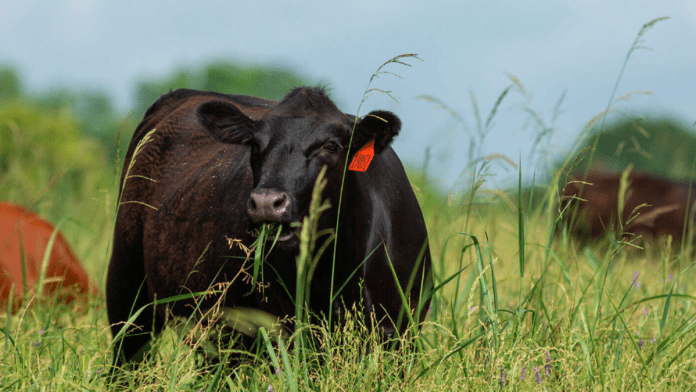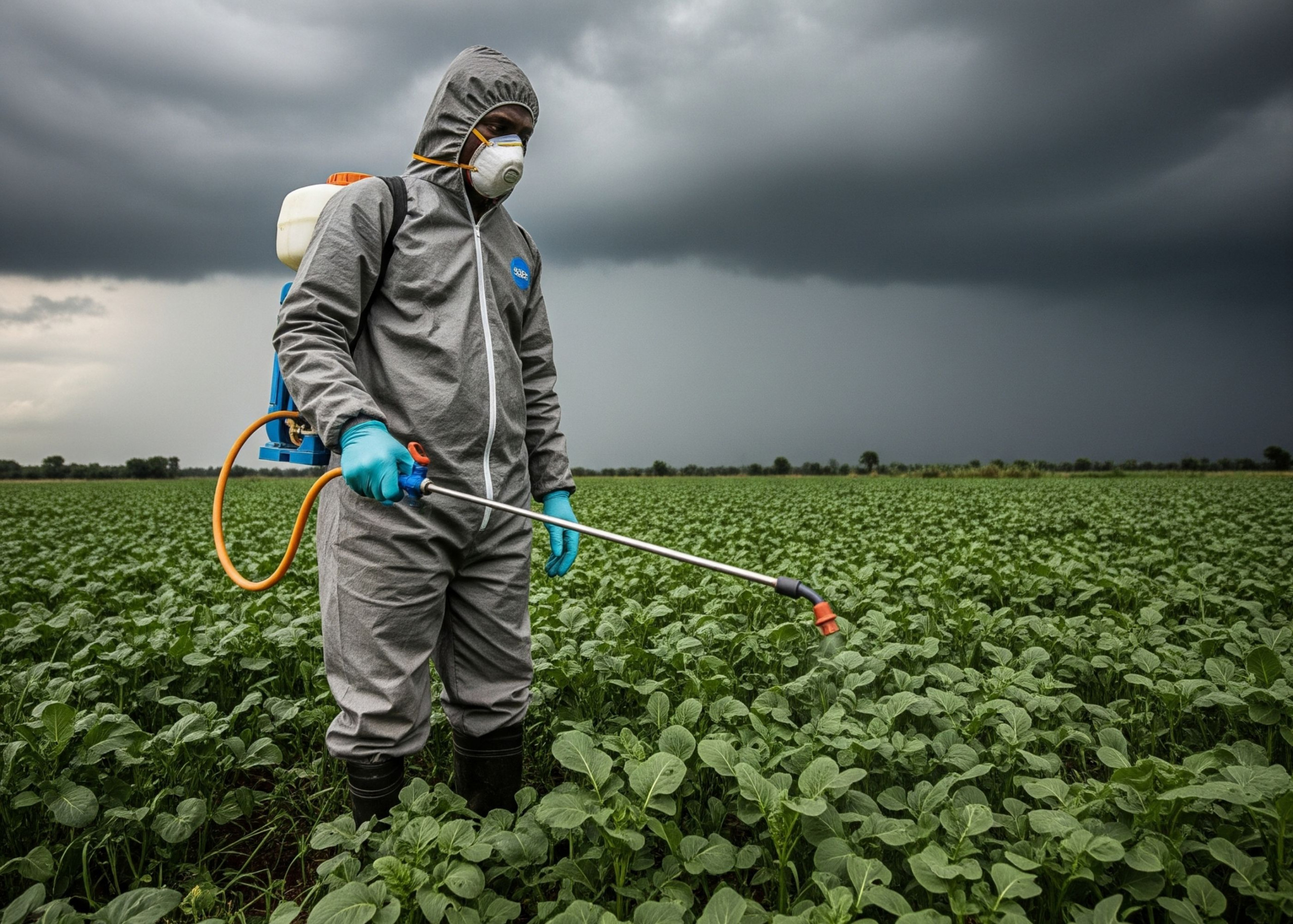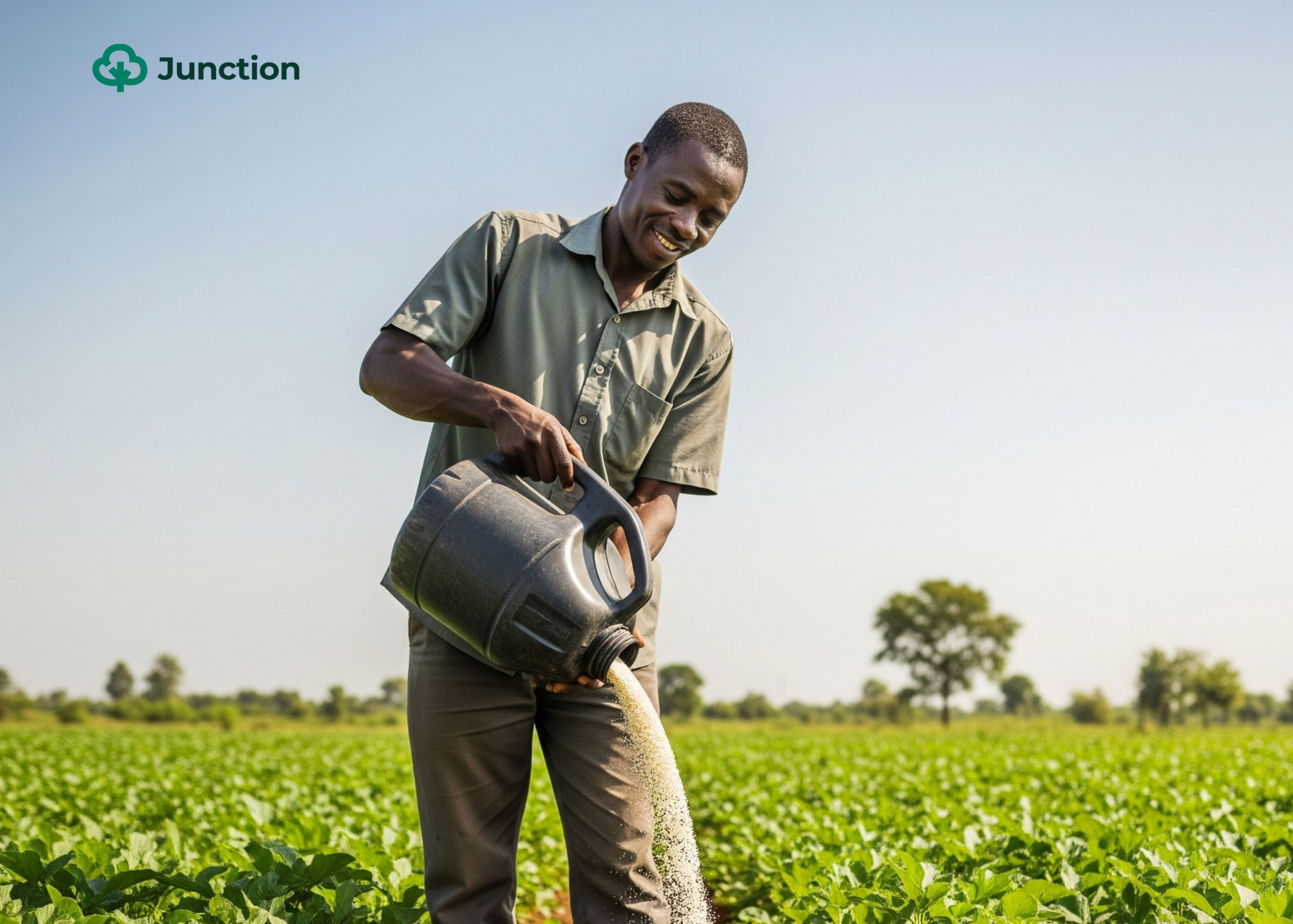
Questions answered in this article: - What is the state of forage production in Nigeria and what are the biggest challenges impeding it? - How does dry season impact forage production and what effects does it have on livestock, farmer's income and food security? - What can ruminant animal farmers do to limit the effect of dry season on their production?
Forage grasses and legumes are the primary feed sources for most ruminant livestock in Nigeria. Thus, raising yields of forage crops can increase the availability and affordability of livestock products and reduce pressure on scarce pastures.
Ruminant animals in the tropics are raised predominantly on grass, which is difficult to digest, has poor nutritional value, and is unavailable in the off-season.
The availability of natural pasture exhibits seasonal variation; they are more abundant, highly nutritious, and more succulent in the rainy season (April – November) as opposed to the dry season (November – February) when they become scarce, fibrous, and devoid of most essential nutrients such as protein, energy, minerals, and vitamins.
Forage scarcity raises the cost of ruminant production. Producers seek alternatives like cultivated fodder crop residue, agro-industrial by-products, or concentrates. These alternative feed resources, on their own, cannot provide livestock with the nutrients they need for optimal growth and development. Instead, they are used mainly as supplements.
The science and economic importance of cultivating forage in developing countries is still being researched. One reason for this is that in a country like Nigeria, for example, there are limited cultivated pastures across Nigeria. The nomadic and pastoralists are widely distributed across its six geographical zones, and they migrate from north to south, searching for natural grazing lands in times of forage scarcity.
The economics of managing these herds as they move from one region to another in search of feed during the dry spell still needs to be adequately analysed. While herders see their method as a way of getting free feed for their livestock, it presents several risks in the long run. Their livestock constantly faces the risk of pests and disease attacks, nutritionally unbalanced feeding, slow growth rate and death. There is also the insecurity it causes for the animals and people. Meanwhile, animals raised under intensive and semi-intensive systems are done mainly by small and medium-scale farmers. These producers keep poor records of performance evaluation. There is a need for innovative measures to harvest and preserve the forage during abundance and irrigation techniques to aid the establishment of pasture all year round.
This article will examine the state forage production in Nigeria, the challenges that dry season (or drought) have, and suggest solutions to the issues raised. The importance of livestock, especially ruminants, to the countryâs economy, makes this an important discussion.
Forage production in Nigeria
Ruminant animals rely on the availability of forage resources from rangelands and sown pastures. Forage efficiency depends on the ability of the range environment to supply forage in meeting the nutritional demands.
Historically, pasture species evaluation (exotic and native) in Nigeria began in 1935 at Shika-Zaria Grassland Research Station. Available records show there were 414 state grazing reserves in the country in 2016, with about 34% gazette and only 2.7% having some form of developmental work. Grazing laws have been ignored, thereby encouraging encroachment of gazette grazing reserves.
Over the years, Nigeriaâs grazing land has been neglected and poorly managed. In most places, areas proposed for grazing reserves face the challenges of blockage of stock routes. The policy and legal vacuum worsens conflicts between pastoralists and crop producers. Thus, as the population increases, there is a need to rejuvenate grazing reserves with exotic forage and establish more to meet the demand for ruminant feed.

Food and Agriculture Organization (FAO) statistics indicate that Nigeria has a total area of Land, grassland and forest of about 92 million hectares (ha), 34.7 million ha, and 10 million to 11 million ha, respectively. This means nearly 38% of the countryâs land area is grassland, and less than 12% is forest land. Land under permanent meadows and pastures is about 28 million ha, which only slightly smaller than France. Interestingly, there is no record of the total cultivated pasture in the country.
Forage and pasture management
As the numbers show, Nigeria has enough natural land covered with grass, legumes or other plants for forage production or livestock grazing. Nigeriaâs grassland dwarfs that of the Netherlands, for example, which has only about 1 million ha but boasts of a cattle market worth $1.6 billion.
On the other hand, artificial or cultivated pasture production is not a common venture in Nigeria. It increases the cost of livestock production and requires additional technical knowledge to grow and manage pasture.
However, pasture management is not restricted to only cultivated or artificial pastures. Natural pastures need care as well and that involves keeping it safe and preserving soil health to produce forage grasses or legumes suitable for livestock consumption.
Also, managing a grazed pasture and a mechanically harvested pasture differ. For example, a pasture meant for continuous or rotational grazing will not be managed the same way as a pasture meant to be cultivated and harvested for forage.
Good pasture management entails managing soil nutrients, controlling weeds and pests, and ensuring sufficient water supply throughout the plant life cycle. In addition, the economics of production and cost analysis of the forage grass or legume should be properly analysed, with the yield potential of the forage seed cultivar.
As we mentioned from the beginning, one thing that can endanger forage is a dry spell or season. Since it is expected to happen, here are some things you should know and practices to adopt.
The challenge of dry season on forage
The rainy season brings abundant natural flourishing forages; in the dry season, the case is opposite. There is a scarcity of fresh forages for animals to graze on, resulting in poor nourishment, which can reduce animalsâ growth rate, draught ability, production and reproduction. These problems defeat the sole reason for feeding animals, which is for them to attain the desired growth, production, and reproduction.
In turn, it impacts food security as Nigerians rely heavily on beef consumption. An article says that the country accounts for nearly half of all Africa’s annual beef consumption, about 360,000 tonnes. Therefore, a fall in ruminant animal production has a far reaching nourishment problem for Nigeria.
Also, dry season weather elements, which come in the form of drought, cold and change in temperature, can alter the chemical component of forage. Temperature and soil moisture strongly affect forage plants’ nutritional value and digestibility through changes in leaf chemical composition or the proportion of leaf blade tissues.

One way to keep the adverse effects of dry season on forage is to preserve them. Proper preservation ensures that their nutrient content is not lost when it is time to feed them to livestock.
Forage preservation techniques
Forage conservation is a key pasture management method where excess forage is conserved during the period of abundance (rainy season) to be used during periods of scarcity (dry season). It can help avoid excessive spending on buying expensive concentrate feeds.
Livestock farmers should harvest forages during the peak periods of growth and preserve them to address the issue of feed scarcity.
Commonly preserved forages can be grouped into three categories, namely herbaceous vegetation from natural pastures, crop residues, and planted forages. Also, forage from browse plants, agro-industrial by-products, root crops and tubers can be preserved as feed.
These forage groups’ significance and preservation methods vary with the farming systems and socioeconomic status. Smallholder farmers, for example, depend on crop residue as a source of forage for their livestock. There are various methods of conserving this kind of forage, including preserving them in the form of silage, hay, or straw.
Silage and ensiled by-product
Silage is produced by fermenting high-moisture forages after wilting, chopping and compaction under acidic and anaerobic conditions in structures called silos. A good quality silage will not deteriorate and can be produced from most grass, cereal, and legume crops.
Silages generally have a higher moisture concentration. Compared to hay, they have about 650 g per kg to the latterâs 8 to 150 g per kg moisture concentration. Silages are preserved without drying and are sometimes harvested at an earlier growth stage than hay.

There are four stages to producing silage: aerobic, fermentation, stable and feed-out phase.
The first phase removes any oxygen trapped between the forage particles through the respiration of the plant material and the aerobic activities of yeasts and bacteria.
After all the oxygen is used up, the second phase (fermentation) commences and the storage becomes anaerobic. Depending on the properties of the ensiled crop and the ensiling conditions, the process may last from several days to weeks. A successful fermentation process will see the number of lactic acid-producing bacteria dominate, reducing the pH to 3.5 or 4.5. Lower pH levels may be achieved in unwilted material, whereas the higher levels are from wilted forages.
The stable phase occurs when the medium is stable, i.e. the pH level has dropped, and air and water are not permitted to enter the storage site. Most microorganisms used in fermentation slowly decrease in number, resulting in a relatively stable silage. However, some acid-tolerant microorganisms will survive this period.
In the final phase i.e., feed-out, deterioration begins through the degradation of the preserved organic acids by yeasts and occasionally acetic acid bacteria. This will cause a rise in the pH, and then spoilage begins. A good silage storage medium should maintain the stable phase for an extended period.
Hay
Hay is dried grass, legumes, or other herbaceous plants that are cut and then dried. Preserving forages as baled, loose stacked or standing hay is widely practised among smallholders and commercial farmers worldwide. With increasing climate variability, even pastoralists are now practising storing grass as hay.

Straw
Crop residues are an important feed source across Nigeria, particularly in mixed-crop livestock systems. The remaining straw, after harvesting and threshing of cereals, is collected and dried for livestock feeding. In many sub-Saharan African countries, crop residues or straws contribute to a significant amount of the feed for livestock. Straws are obtained from dried stalks and husks after harvesting maize, rice, sorghum, and millet. These forages are dried on the field and then stored on sheds or rooftops for further drying and feeding to livestock.
Technology and forage preservation
As hinted in the section above, forage preservation techniques have unique problems like spoilage. There is also the problem of the stored forage losing quality and nutrient due to poor sealing. Some of these issues can be checkmated through:
Using additive
Using chemicals or microbial in forage conservation is a standard solution to preserving it in developed countries. They are primarily used in commercial farming enterprises. For example, heterofermentative lactic acid bacterial inoculants are used to improve the aerobic stability of maize silage. However, none of the bacterial inoculants are produced in Africa. They have to be imported, and the high cost of importation discourages their usage. Therefore, there is a need for research on indigenous alternatives.
Improving silo sealing
Over the years, silo storage has been improved for proper preservation of forage compared to the pit hole and local tanks methods. However, more research is still needed into silo sealing to increase the shelf life of stored forage. One of the few studies on the subject reported that oxygen barrier films have gained recognition to reduce silage top layer losses in commercial silos in South Africa. Although effective, such films are unaffordable for most other farmers in Sub-Saharan Africa. Consequently, most farmers use single or multiple standard gauge polythene sheets to line pits and other silos to reduce spoilage and losses. To protect silage from rainwater seepage, heavier gauge polythene sheets are used. Nevertheless, quality losses are relatively high due to improper sealing.
Pelleting

Pelleting feed is a common practice in livestock and fish feed production. However, forage pellets are rare and contain dried forage, such as legumes and grasses. To make them into pellets, the forage is ground, mixed with steam, and pushed through a dye with pressure. Once made, the pellets are dried to a moisture level for longer storage. There can then be a sole forage containing a single forage or a mixed forage comprising different forages. Pelleting makes feed formulation easy. The nutritional value of crop residues and other agro by-products can be maintained or enhanced by mixing grasses, legumes and concentrate to get a highly balanced pelleted forage.
Baling forage
Ensiling or fermenting forages takes place in bale, just like hay and silage. Baleage is partially dried forage with about 45 to 55% moisture. They are baled with a baling machine into a rectangular, square or circular shape and sealed in plastic. Monitoring the moisture content is critical in reducing the risk of spoilage once baled. Baling makes storage and movement of forage easier. High moisture content and temperature will bleach the forage and affect the quality. A well-preserved forage bale will maintain the green colour and not be brownish.
Conclusion
Forage can be preserved as silage and ensiling, hay, straw and stover. Forage conservation using innovative technology such as improved silo sealing, pelleting, use of additive and baling to improve the preservation of forage feed is perhaps the greatest opportunity to bridge the feed gap due to the seasonal variability in feed availability and quality.
To consider pasture production as an option, it is vital to consider things like cost analysis and yield potential of the cultivar. A good source of irrigation should be provided to enable all year-round production. Farmers will require training in the science of pasture production and forage management.
There should be a paradigm shift in livestock production from one that sustains large heads of poor-productivity herds to fewer well-fed and highly-productive animals. This will require abandoning poor feed, such as crop residues, because of their poor nutrient quality. Livestock feeding should focus on balanced rations containing upgraded crop residues with improved harvested or conserved forages and other ingredients that can sustainably optimise livestock productivity and profitability.


